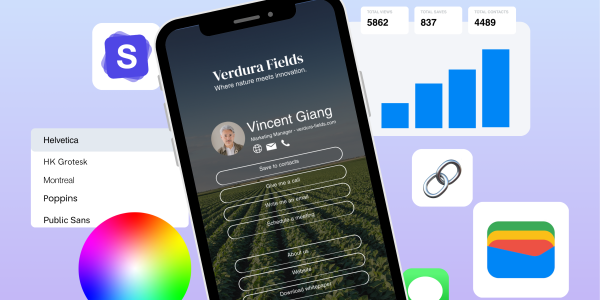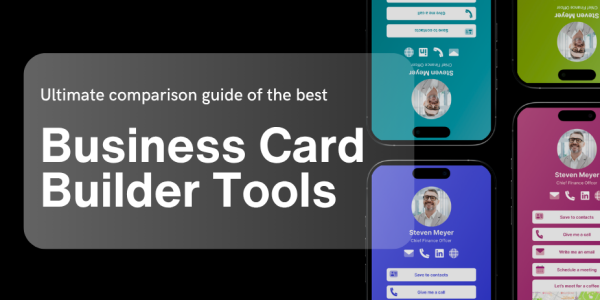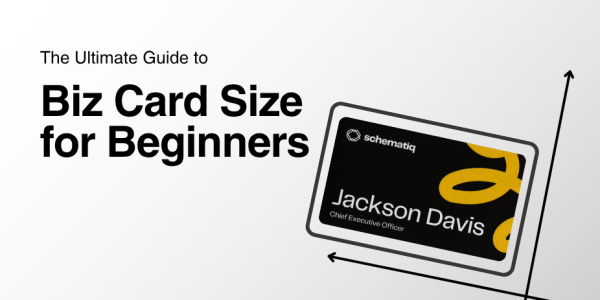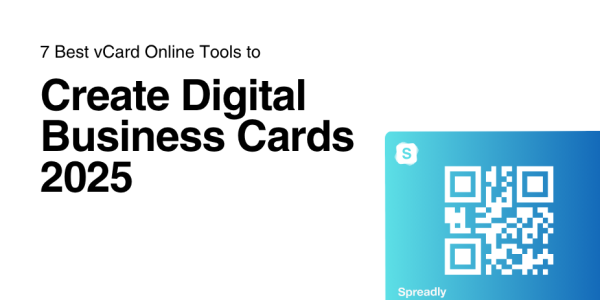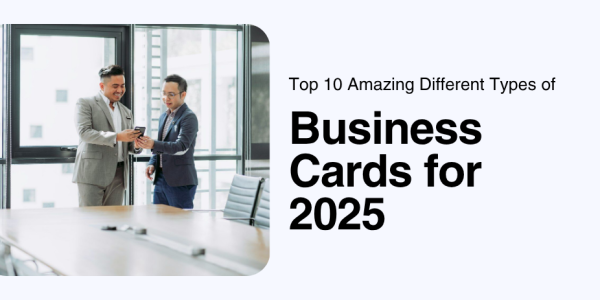Networking Cards Guide: Everything You Need to Know in 2025
14 minutes
14th of August 2025
In this article:
- What Are Networking Cards?
- Key Features of Modern Networking Cards in 2025
- Digital Networking Cards: The Future of Professional Connections
- Best Practices for Designing Effective Networking Cards
- How to Use Networking Cards Effectively
- The Future of Networking Cards: Trends and Predictions for 2025 and Beyond
The world of professional networking is rapidly evolving in 2025. Making a powerful first impression is more important than ever, and networking cards are at the heart of these connections.
Whether you’re shaking hands at a conference or connecting virtually, networking cards have transformed how professionals share information and build lasting relationships. From sleek traditional cards to high-tech digital solutions, the options are expanding fast.
This guide covers everything you need to know about networking cards in 2025. You’ll explore the latest types, must-have features, design trends, digital innovations, best practices, and predictions for the future.
Ready to elevate your networking game? Dive in and discover how to make every connection count.
What Are Networking Cards?
Networking cards are essential tools for sharing your professional identity in today’s fast-paced business world. Whether you’re meeting someone at a conference or connecting during a virtual event, networking cards help you leave a lasting first impression. They act as your portable introduction, bridging the gap between in-person and digital networking.
Think about the last time you attended a business mixer. You likely exchanged a traditional business card or, perhaps, shared a digital card via your smartphone. This seamless transfer of information is what makes networking cards so valuable for building relationships in 2025.
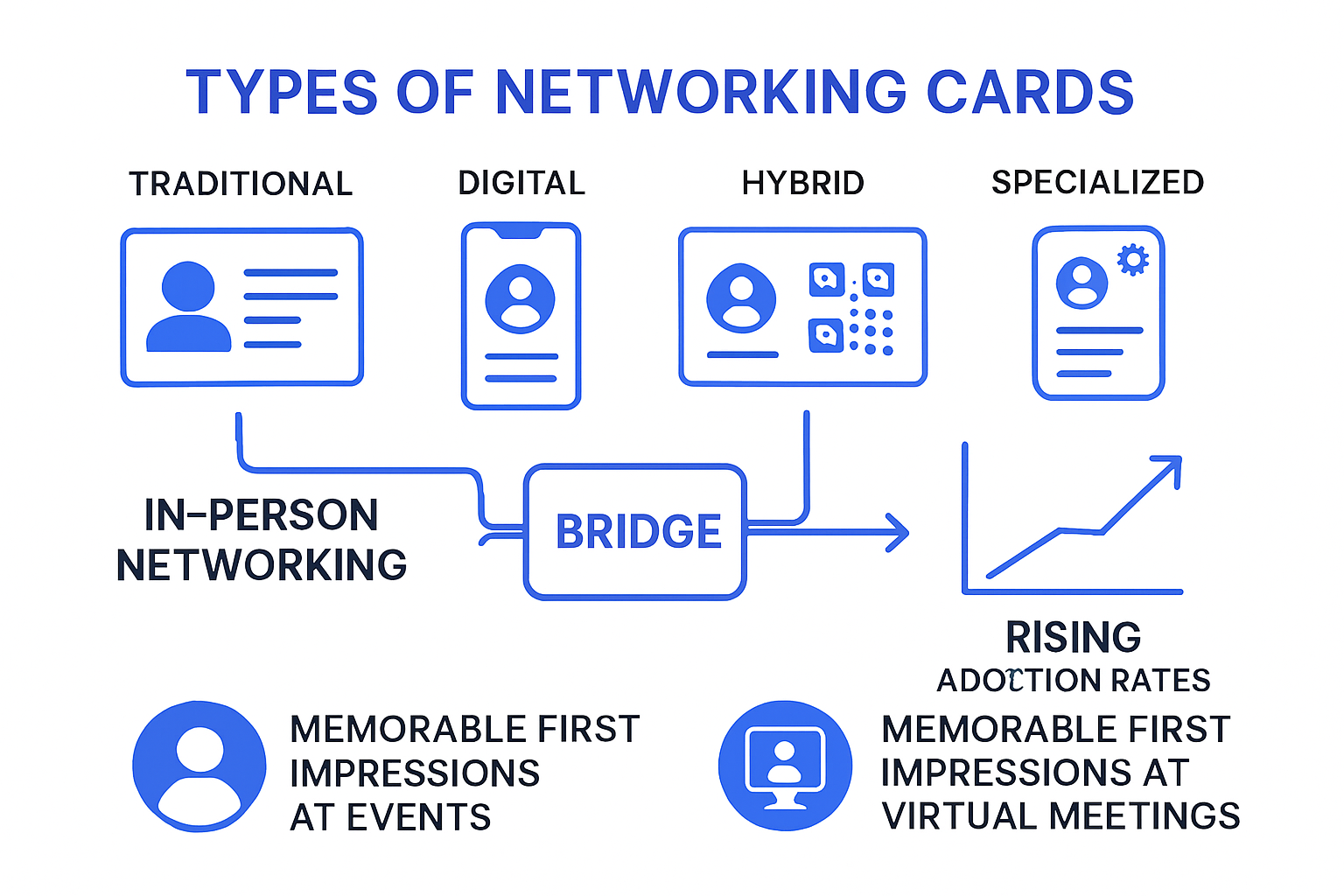
Definition and Purpose
Networking cards are compact, information-rich tools designed to easily share your professional contact details. Their main purpose is to help you connect with others efficiently and memorably, whether you’re at a business lunch or a global virtual summit.
They typically include your name, job title, and ways to reach you. By handing out networking cards, you not only provide your details but also reinforce your brand and professionalism. These cards now bridge the divide between traditional face-to-face meetings and modern digital interactions, making them crucial for anyone looking to expand their network.
For example, you might hand someone a physical card at a conference or send a digital version during a video call. Either way, networking cards ensure your connections have everything they need to follow up.
Types of Networking Cards
There are several types of networking cards to suit different needs and industries:
- Traditional paper business cards: These remain popular, with options like standard, premium, or eco-friendly materials.
- Digital business cards: Shared via smartphone apps, QR codes, or NFC technology, these cards are gaining traction for their convenience and sustainability.
- Hybrid cards: These combine physical cards with digital features, such as embedded QR codes or NFC chips, allowing instant access to online profiles.
- Specialized cards: Designed for specific industries or roles, these may include unique features or formats tailored to particular markets.
Choosing the right type of networking cards depends on your goals, audience, and style. For instance, tech professionals might prefer NFC-enabled cards, while creative freelancers could opt for visually striking hybrids.
When and Why to Use Networking Cards
Networking cards come into play at various events like conferences, trade shows, and networking mixers. They're also useful during everyday business interactions, such as meetings, interviews, or client visits. Using networking cards shows professionalism and ensures you’re always ready to connect.
The benefits go beyond convenience. Networking cards help reinforce your personal or company brand and make information exchange smooth. In fact, recent Digital Business Card Statistics 2025 reveal that over 70% of professionals still use some form of business card, with digital options on the rise due to their efficiency.
Consider the story of a freelancer who began using networking cards at local meetups. By sharing a customized card, they stood out and saw a notable increase in new client inquiries. It’s clear: networking cards are more than just paper or pixels—they’re your first step to lasting business relationships.
Key Features of Modern Networking Cards in 2025
Networking cards in 2025 have evolved to become more than just a way to share your phone number. They’re your professional handshake, your digital introduction, and your brand’s calling card—all rolled into one. Let’s break down what sets modern networking cards apart and how you can maximize their impact.
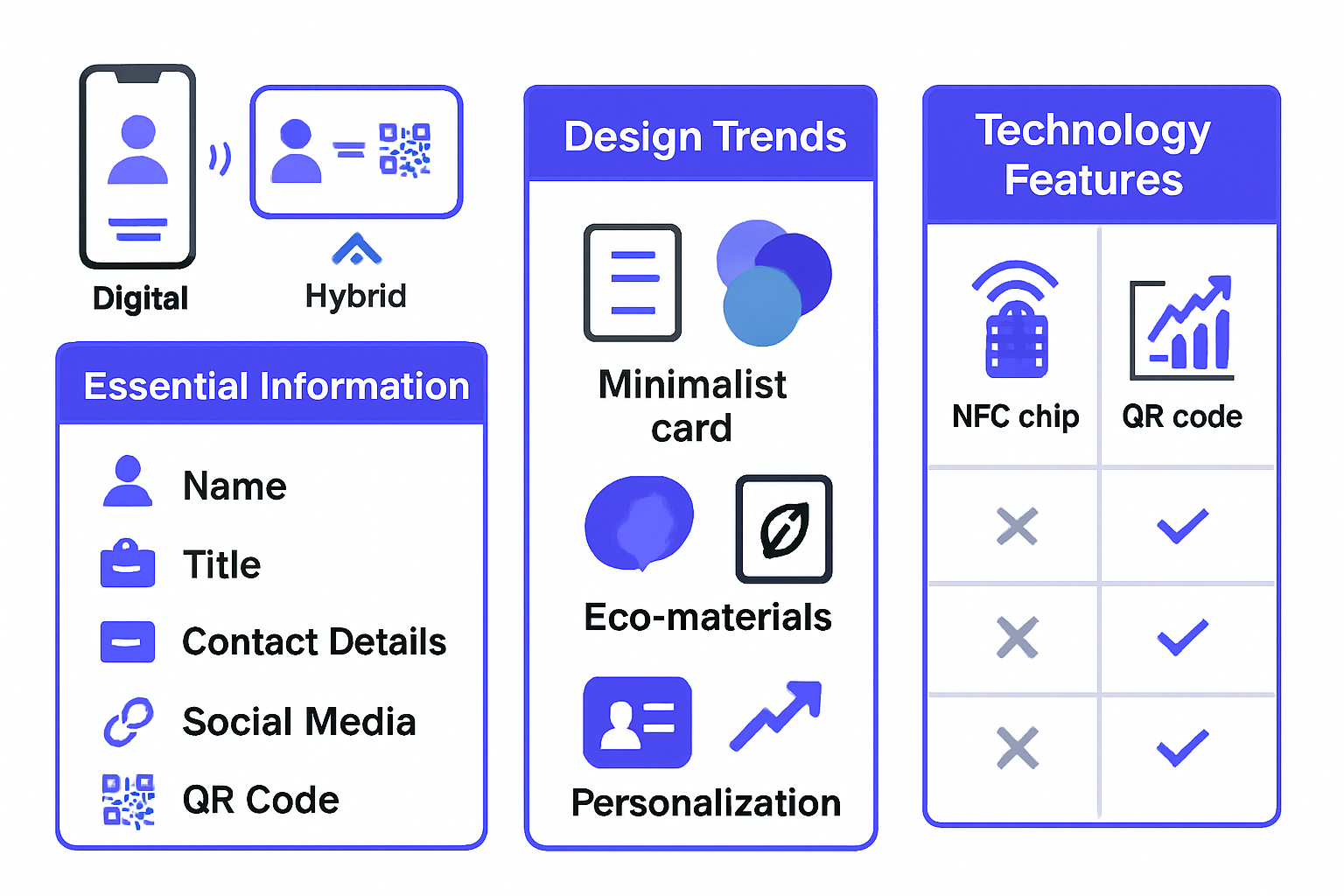
Essential Information to Include
Every effective networking card starts with the right details. In 2025, the basics remain crucial: your name, job title, company, and direct contact methods like phone, email, and website. But that’s just the beginning.
Modern networking cards should also feature your professional social media profiles—think LinkedIn or even Twitter. Adding these handles helps new connections learn more about your expertise and personal brand.
A standout feature today is the inclusion of QR codes. Scanning a code allows recipients to instantly save your information or visit your portfolio, making the process seamless.
Don’t forget about privacy. Only include information you’re comfortable sharing, and make sure your card complies with relevant privacy laws. If you’re using a digital version, check that your platform offers secure storage and sharing options.
Here’s a quick checklist for your networking cards:
| Must-Haves | Nice-to-Haves |
|---|---|
| Name | Headshot or logo |
| Title & Company | Tagline or motto |
| Phone & Email | Unique background |
| Website/Portfolio | QR code or NFC chip |
| Social Profiles | Personal branding elements |
Design and Customization Trends
Design is where networking cards truly shine in 2025. Minimalist layouts are popular, focusing on clarity and clean lines. Bold colors and striking fonts help your card pop in a stack, while interactive elements—like scannable QR codes or NFC tags—add a modern twist.
Brand consistency is essential. Use your company’s logo, official color palette, and fonts to reinforce your identity. Personal touches, such as a professional headshot or a catchy tagline, make your card memorable and relatable.
Eco-friendly materials are trending, with many professionals choosing recycled paper or opting for digital-first cards to reduce waste. If you want to see what’s hot this year, check out some Modern Business Card Trends for inspiration and practical examples.
Customization also extends to backgrounds and textures, allowing you to tailor your networking cards to your industry. For creative fields, vibrant designs and unique shapes stand out, while corporate settings lean toward sleek, understated elegance.
Ultimately, your card’s design should reflect both your personality and your professional values. Don’t be afraid to experiment with new formats and digital features to stay ahead.
Technology Integration
Technology has transformed networking cards into smart tools for building connections. NFC chips are now common, letting you share your contact details with a simple tap—no more manual data entry. QR codes remain a favorite for instant access to digital profiles, portfolios, or even video introductions.
App-based networking cards take things further. They offer real-time analytics, so you can track when your card is viewed or saved. This feedback helps you follow up more effectively and measure the success of your networking efforts.
Integration with CRM and contact management platforms is another game-changer. Syncing new contacts automatically saves time and ensures you never lose a lead. At tech events, NFC-enabled networking cards are quickly becoming the norm, enabling fast, touchless exchanges.
As these features become standard, networking cards are redefining what it means to make a professional connection. Whether you’re a freelancer or part of a global team, leveraging technology ensures your networking cards leave a lasting impression—both in person and online.
Digital Networking Cards: The Future of Professional Connections
The era of networking cards is rapidly evolving, with digital solutions taking center stage as professionals seek smarter, more eco-conscious ways to connect. Digital networking cards are reshaping how we share information, making each introduction more seamless and impactful. As more people embrace remote work and hybrid events, the importance of efficient, tech-savvy networking cards is only increasing.
Advantages Over Traditional Cards
Digital networking cards offer a host of benefits that traditional paper cards simply can't match. For starters, they're always up to date—no more tossing out stacks of outdated cards after a job change or rebrand. With networking cards in digital form, you can update your details instantly and ensure everyone has your latest information.
Sharing is a breeze, too. Whether you're at a conference or a virtual event, you can send your digital networking cards via QR code, NFC tap, direct link, or even email. This flexibility means you never miss a connection, no matter where you are.
Sustainability is another huge win. Digital networking cards eliminate paper waste and printing costs, making them a smart choice for eco-conscious professionals. Plus, digital cards can track engagement, letting you know who viewed your profile or saved your contact details—a feature that helps you measure the impact of your networking efforts.
How Digital Networking Cards Work
Creating a digital networking card is simple and intuitive. Most platforms guide you through entering your contact details, adding social media links, uploading a profile photo, and customizing the design to match your brand. Once your networking cards are ready, sharing them is effortless.
You can display a QR code on your phone for contacts to scan, use NFC to share with a tap, or send a link via email or messaging apps. Many digital networking cards can even be embedded in your email signature or used as a virtual background during video calls.
Recipients don't need to download an app to access your information. With just a scan or a click, they can view and save your networking cards in seconds. Security is a top priority—most platforms offer privacy controls, so you decide what information is shared and with whom.
Leading Digital Networking Card Solutions in 2025
The marketplace for digital networking cards is growing fast, with several standout platforms leading the way. Top solutions offer features like CRM integration, analytics, and rich customization options. Some focus on large enterprises, while others cater to freelancers and small businesses.
Here's a quick comparison:
| Platform | Key Features | Pricing | Integrations |
|---|---|---|---|
| Spreadly | Real-time updates, CRM, NFC | Flexible | Major CRMs, email |
| HiHello | Custom branding, analytics | Subscription | LinkedIn, Slack |
| Mobilo | NFC, lead capture, templates | Tiered | Salesforce, HubSpot |
User experience varies, with some platforms emphasizing simplicity and others offering advanced features. As highlighted by Digital Business Card Trends 2025, personalization, security, and seamless integration are driving adoption among global teams. Companies are increasingly adopting networking cards that support both digital and hybrid work environments.
Spreadly: Enhancing Digital Networking Cards
Spreadly stands out in the digital networking cards arena by offering an intuitive platform designed for modern professionals. With Spreadly, you can create customizable networking cards that reflect your brand and personality, ensuring every introduction is memorable.
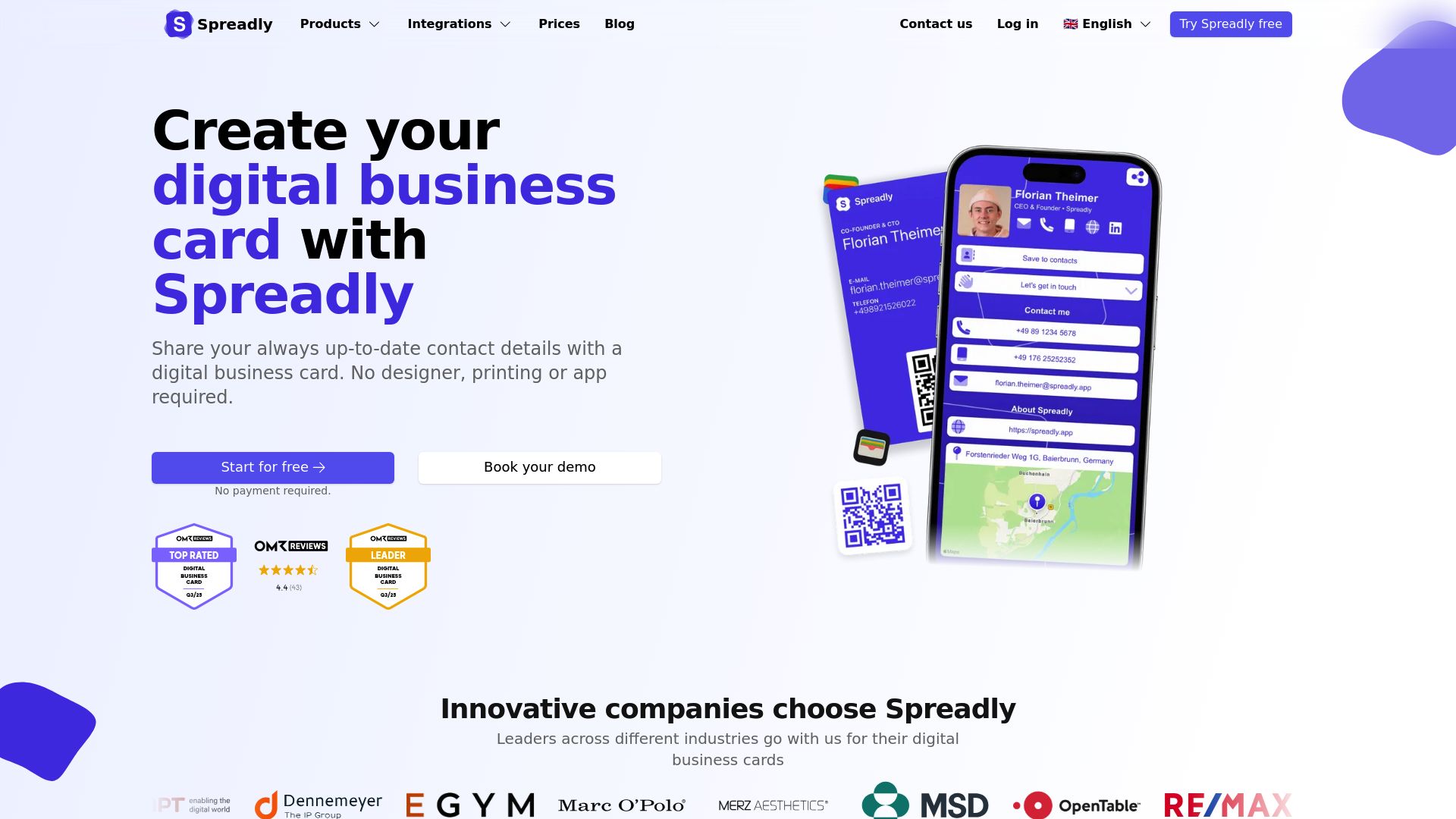
Key features include CRM integration, real-time updates, and powerful lead capture tools. Spreadly’s networking cards support eco-friendly sharing and are trusted by leading brands for connecting at both in-person and virtual events.
Its user-friendly interface and robust analytics make it easy to track engagement and manage contacts. Whether you’re a freelancer, executive, or part of a global team, Spreadly empowers you to make the most of your networking cards, helping you build lasting professional connections in 2025 and beyond.
Best Practices for Designing Effective Networking Cards
Designing standout networking cards can be the difference between getting remembered or forgotten. Effective design isn’t just about looks—it’s about communicating your brand clearly and making lasting first impressions.
![]()
Visual Design Principles
Great networking cards start with clarity and strong branding. Prioritize readability with easy-to-read fonts, sharp contrast, and a clean layout. Avoid clutter—use white space to let your information breathe.
- Select brand fonts and colors to reinforce your identity.
- Include your logo and imagery that reflect your industry.
- Opt for minimalist or bold styles, depending on your audience.
Balance is key. Don’t overwhelm with information. Use interactive elements sparingly, like subtle icons or color accents, to draw attention to key details. If you’re redesigning, compare your old and new networking cards to see immediate improvements in clarity and impact.
A well-designed card grabs attention and sparks conversations, helping you stand out in a crowded room. Remember, networking cards are a handshake in print—make yours memorable.
Information Hierarchy and Clarity
Every detail on networking cards should have a purpose. Start with your name and job title at the top, followed by company and contact information. Place QR codes or NFC tags strategically so they’re easy to spot but don’t distract.
Avoid cramming every detail onto your networking cards. Instead, focus on what your contact needs most. Use bold or larger fonts for primary info, and keep secondary details in smaller text.
A clear layout ensures recipients instantly know how to reach you, making your networking cards work harder at every event.
Customization for Different Industries
Tailor your networking cards to your field for even greater impact. Creative professionals might use vibrant colors or unique backgrounds, while corporate or executive cards often stick to classic, understated designs.
- Consultants: Add a tagline or specialty to your networking cards.
- Photographers: Feature a mini portfolio image or striking headshot.
- Sales teams: Highlight a call-to-action or QR code for direct lead capture.
Personalization signals professionalism and attention to detail, ensuring your networking cards resonate with your audience.
Printing and Material Choices
Material choices can elevate networking cards from basic to unforgettable. Premium finishes, like textured or matte stock, offer a tactile experience. If sustainability matters, opt for recycled paper or plant-based inks.
Eco-friendly networking cards are gaining popularity, especially as companies aim to reduce their environmental impact. For more ideas, explore the best eco-friendly digital business cards for 2025.
Durability ensures your cards make it home in perfect shape, keeping your brand top of mind.
How to Use Networking Cards Effectively
Making the most of your networking cards goes beyond simply handing them out. Whether you prefer traditional cards or digital solutions, using your cards strategically can set you apart and help you build lasting connections. Here’s how to prepare, impress, follow up, and avoid common pitfalls when using networking cards in 2025.
Preparation and Distribution Strategies
Preparation is key to maximizing the impact of your networking cards. Always keep a set of cards—both physical and digital—readily accessible. Store traditional cards in a dedicated holder to prevent damage and ensure quick retrieval at events.
For digital cards, set up your profile on your preferred platform and save the card to your smartphone wallet or email signature. If you’re new to digital options, follow a step-by-step guide to create a digital business card for seamless sharing.
At events, be mindful of timing and etiquette. Offer your networking cards after a meaningful conversation, not as an immediate introduction. This approach feels more genuine and helps your card stand out.
Making Memorable Impressions
A memorable exchange starts with personal interaction. When handing over your networking cards, make eye contact and use a friendly opener related to your conversation. For digital cards, ask if the recipient prefers QR code, NFC tap, or a link sent via email.
Visual elements reinforce your brand. A striking logo, bold color, or unique design can spark follow-up questions and keep you top of mind.
Consider sharing a brief story or value proposition as you exchange networking cards. At industry events, professionals who combine a warm approach with a visually appealing card often leave a lasting impression—sometimes leading to unexpected opportunities.
Following Up After Networking Events
Effective follow-up turns a simple exchange of networking cards into a real relationship. Within 24–48 hours, send a personalized email or connect on LinkedIn referencing your conversation. If you use digital cards, leverage built-in analytics to track views and engagement.
Organize new contacts by importing details into your CRM or contact list. This ensures you can nurture connections over time.
A quick, thoughtful follow-up—such as sharing a relevant article or invitation—shows initiative and professionalism. Networking cards provide the foundation, but it’s your follow-up that builds the bridge.
Avoiding Common Mistakes
Even the best networking cards can fall short if misused. Double-check that your contact information is current and accurate. Outdated details can frustrate potential connections and cost you opportunities.
Avoid overly complex designs that distract from your core message. Prioritize readability and clarity. In today’s tech-forward world, neglecting digital options can also limit your reach. Explore NFC-enabled and app-based solutions to make your networking cards relevant for every audience.
By sidestepping these common mistakes, you ensure your networking cards always work in your favor.
The Future of Networking Cards: Trends and Predictions for 2025 and Beyond
As we look toward the future, networking cards are rapidly evolving to meet the changing needs of professionals around the globe. The coming years promise exciting innovations, greener choices, and new etiquette rules for how we connect. Here’s what to expect for networking cards in 2025 and beyond.
Emerging Technologies and Innovations
The next wave of networking cards will be powered by cutting-edge technology. Expect to see AI-driven card creation that auto-updates your info and personalizes your card for each event. Augmented reality (AR) business cards are emerging, allowing recipients to scan and view interactive content right on their devices.
Blockchain is also entering the scene, promising secure contact sharing and verification. These advancements aren’t just buzzwords—they’re already rolling out at tech conferences and industry expos. Networking cards are becoming smarter, safer, and more dynamic, setting the stage for a new era in professional introductions.
Sustainability and Eco-Friendly Networking
Sustainability is now a core focus for networking cards. As digital-first networking takes off, professionals are reducing paper waste and embracing eco-friendly practices. Many companies are switching to cards made from recycled paper, plant-based inks, or even biodegradable materials.
Corporate sustainability initiatives are pushing the industry to innovate. If you’re looking for inspiration, check out these Sustainable Business Card Materials to see how brands are making greener choices. Networking cards are no longer just about making connections—they’re about making a positive impact on the planet.
Evolving Professional Networking Etiquette
Professional etiquette around networking cards is shifting quickly. Digital exchanges are becoming the norm, especially at virtual and hybrid events. People now expect the option to scan a QR code or tap an NFC card, rather than exchange paper.
With more personal data being shared, privacy and consent are front and center. It’s also common to see multilingual and cross-border networking cards as global teams connect. According to recent reports, the Decline of Traditional Business Cards is accelerating as professionals prioritize digital convenience and security. Networking cards are adapting to fit new expectations in every industry.
Predictions for Networking in a Hybrid World
Looking ahead, networking cards will seamlessly bridge in-person and virtual connections. Integration with remote work tools and event apps will make it easy to share your info anywhere. Expect to see networking cards that update in real-time and sync with your CRM or contact list.
The hybrid workplace is here to stay, and so is the need for flexible networking solutions. As digital adoption grows, networking cards will continue to evolve—helping professionals stand out and stay connected, wherever business happens.
Now that you’ve seen how networking cards are evolving in 2025—blending tradition with tech, going eco-friendly, and making it easier than ever to manage your professional connections—you might be ready to try a digital solution for yourself. If you want to experience firsthand how simple, customizable, and powerful modern networking can be, why not give it a go? You can set up and share your own digital business card in minutes, keep your info up to date, and impress at your next event. Ready to see how it works? Start free trial

